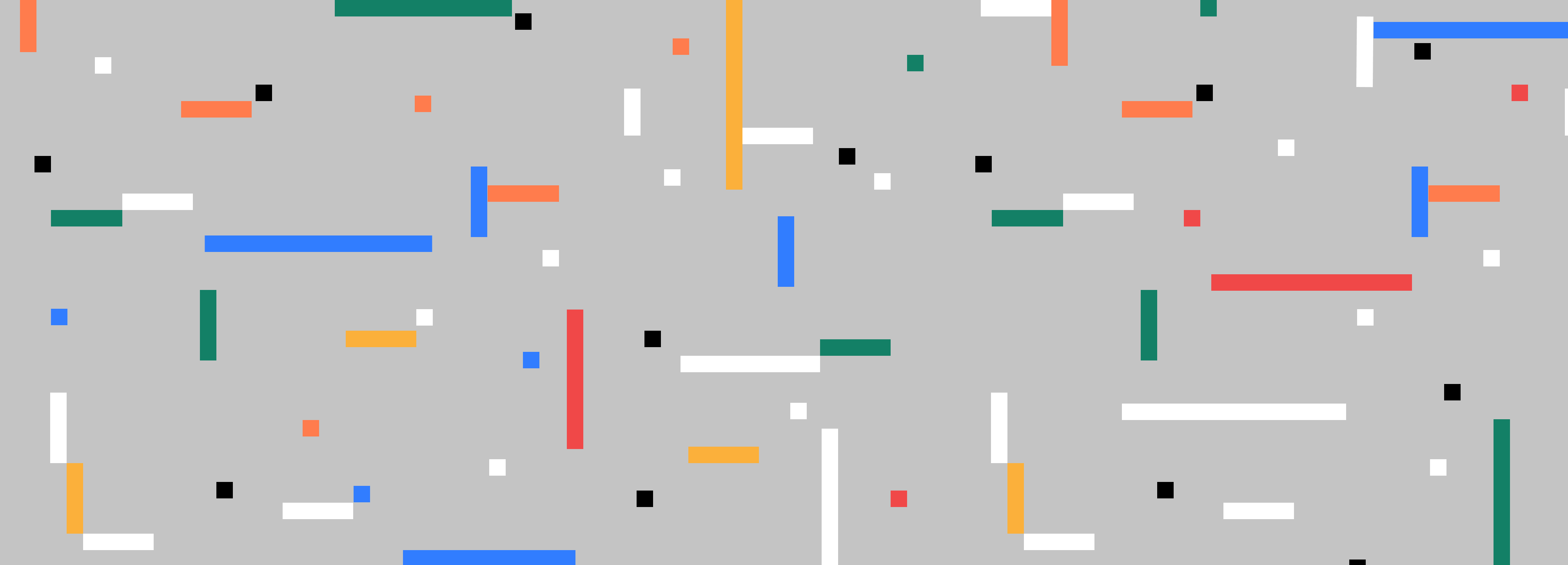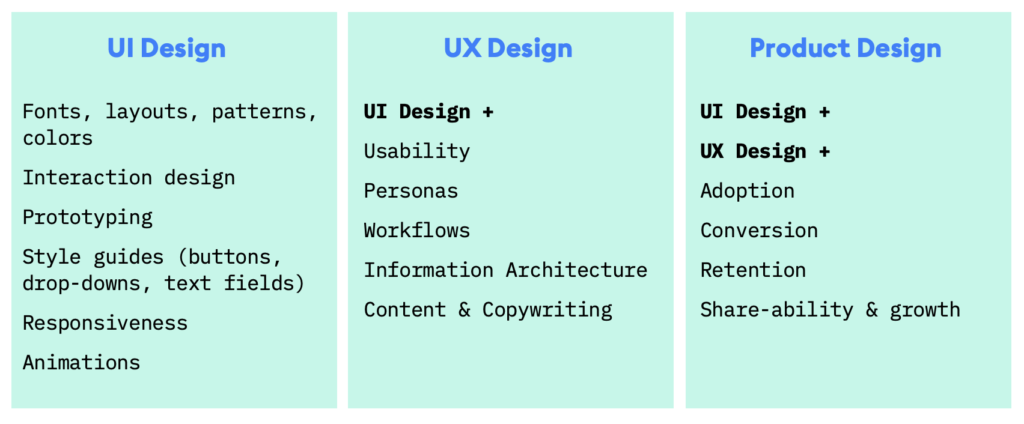
UI vs. UX vs. Product Design: What’s the Difference?
“Design” has come a long way in tech, and it is generally common knowledge that design is crucial to the success of a digital product. But despite the progress, the discipline and its responsibilities can still often be misunderstood.
Many people assume that UI design, UX design, and product design are interchangeable titles and serve the same purpose. In reality, however, they are quite different. And it isn’t a harmless misunderstanding either, because those differences boil down to the very way they approach design.
It started with UI design.
UI Design, also known as user interface design, focuses almost exclusively on the look and feel of the product. UI Designers are focused on creating a cohesive, delightful product complete with animations, responsiveness, and a consistent style guide for the product to follow.
Where UI design falls short, however, is in the actual usability of the product. Despite looking delightful, the product’s experience falls short: maybe it’s hard to navigate, or the information hierarchy isn’t clear so you can’t find what you’re looking for, or it is difficult to actually complete your task. UI designers approach design as an art, but can fall short in translating those beautiful elements into a usable product.
UI Design focuses almost exclusively on the look and feel of the product.
Then came UX design.
UX design came to be in response to the disconnect of the product appearance from its experience: UX designers focus heavily on user needs, wants, and goals. UX designers are constantly iterating and researching to understand the problems, motivations, and goals of their users. They also take a step back to understand the user’s entire workflow, and where their product fits into the bigger picture.
UX design is still a very important and prominent discipline, however this devotion to the user has exposed a deeper gap in the UX designer’s approach. The UX designer can create a delightful product that is also a good user experience, but these days saying your product has good UX is like a chef saying her food is edible. It’s no longer a differentiator; it’s table stakes.
These days, saying your product has good user experience is like a chef saying her food is edible.
That’s where product design comes in.
Product design is about creating a product that meets both the needs of the users and the needs of the business. They make sure that the problems to solve for the business turn into exceptional experiences for the users that also need a problem solved. Product designers have a deep understanding of their users, the same way UX designers do, but they also have a deep understanding of the business goals, competitive landscape, and the overall vision for the product. They are able to go beyond usability, using design to address the business’ unique goals of adoption, conversion, retention, and growth. 
Product designers are crucial to the success of not only a product, but also a business. Designers have the gift of being able to paint a picture of the future; to show, not tell. By understanding the business impact of their work, they’re able to think strategically, and lead product teams. Providing visibility into the “why” means that product designers understand and think about the impact that design has on sales, marketing, development, and overall strategy. This cross-functional visibility opens up growth opportunities that UX and UI designers never can, because they see the bigger picture.



